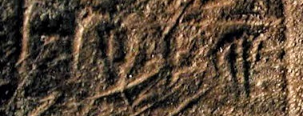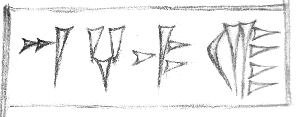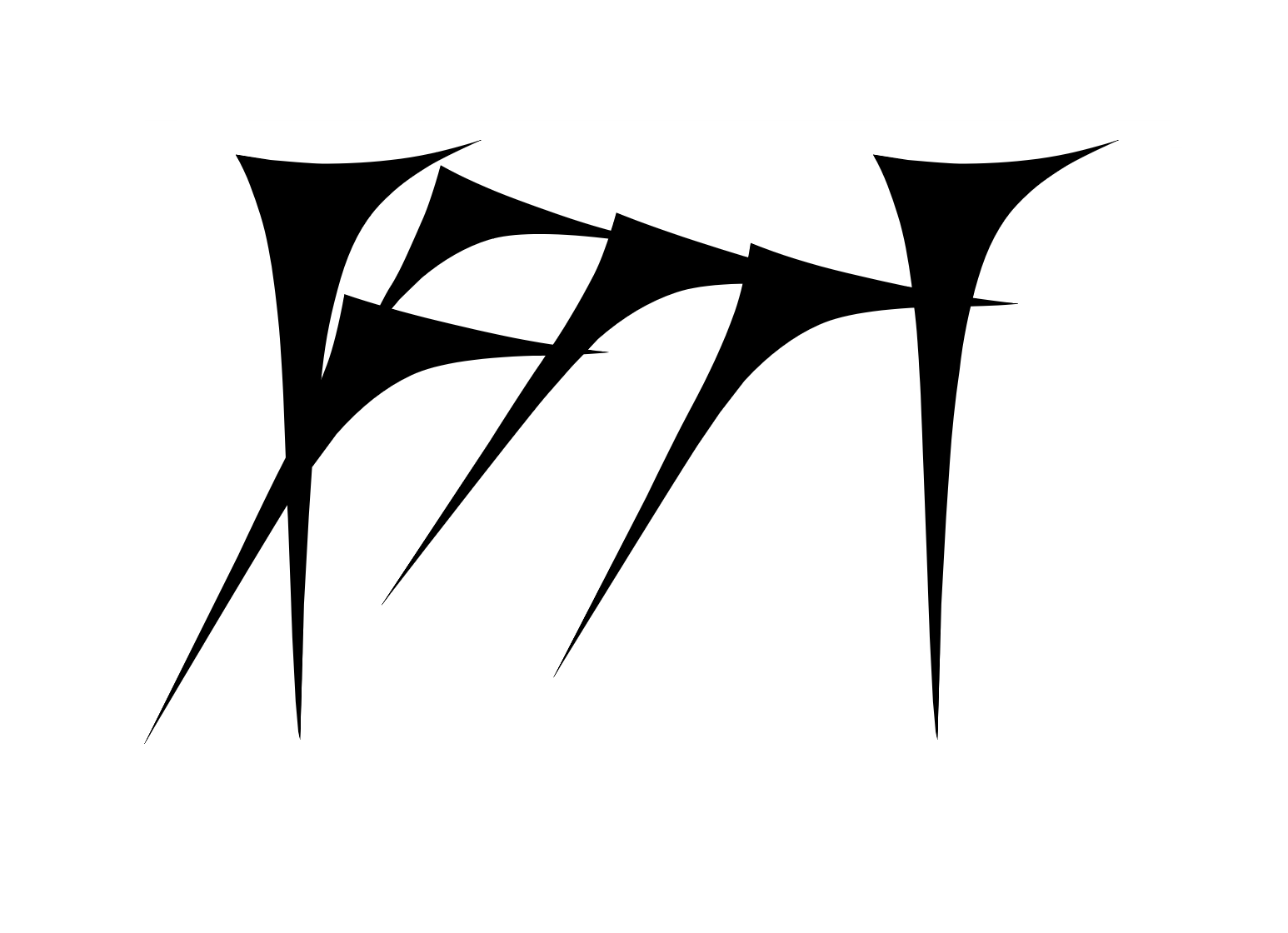Nine inscribed seal impressions from the third volume of the Persepolis Fortification Seals (PFS) corpus were published by Garrison in 2002. Some of these seal inscriptions are illegible or their readings are not certain. The present note provides an update to the edition of four of these seal impressions with some new suggestions. All of them carry monolingual Elamite inscriptions with the following formula: “(seal of) PN1, son (of) PN2”.1
Introduction
There are nearly fifty inscribed seals in the Persepolis Fortification Seals (PFS) corpus that carry monolingual Elamite inscriptions. Almost one-third of these are included in the planned third volume of the series Seals on the Persepolis Fortification Tablets (Garrison 2002, 70). The collated drawings of nine of them have been published so far.2 This article suggests a new reading for four of them. All of these inscriptions record the formulas halmi PN1 DUMU PN2-na and PN1 DUMU PN2(-na) “(seal of) PN1, son (of) PN2” (Garrison 2002, 71).
PFS 81* (S015006)
The first seal impression, PFS 81* (Garrison 2002, 81, fig. 15), is attested fourteen times on the Persepolis Fortification Archive (PFA) tablets,3 but alongside only one good image (the impressions on tablet PF 799),4 and the present review is only based on the same image (Fig. 2). The available hand copy (Garrison 2002, 81, fig. 15) alongside my own (based on the impressions of the seal on PF 799) are presented below (see Fig. 1 and Fig. 3). Differences between them are as follows: in the available image the three small vertical wedges of the NÍG sign and the vertical wedge of the TI sign are clear, and also the KI sign is well spaced with the previous signs.



Therefore, the text of the second line of this seal is complete and legible (for the name of the owner of seal, see Zadok 1984, 21 sub 108, and 38-39 sub 215). Also, we can suggest the following reading of the name of the father of the seal’s owner (after Garrison 2002, 81). Based on Garrison's copy, the MU sign seems a more viable reading than the MI sign at the end of line 1:
- AŠhal-mu(?)
- ANšá-ti-ki-
- tin DUMU HALzí-
- rak0-ka4-na
“The seal of Šati-Kitin, son of Zirakka”
Note that the first sign of the last line (Fig. 4) is similar to SAL+BAR (Fig. 5; see Steve 1992, 137 sub 554a, Achae. 5) rather than MA (according to Jones’ suggestion; see Garrison 2002, 81). In fact, this sign is not similar to any variants of the MA sign (Fig. 6; see Steve 1992, 105 sub 342, Achae. 2-5), and the next sign, QA (with the syllabic value ka4), suggests the previous sign can be the SAL+BAR sign (with the syllabic value rak0). It is noteworthy that although the name Zimaka (zí-ma-ka4, zí-ma-ak/ik-ka4) is common in the PFA and Babylonian sources (see Tavernier 2007, 221-22), the name Zirakka is not attested elsewhere. This name can be a -ka- extension of zira- (probably OP jī̆ra- “intelligent” or čira- “capable”; see Tavernier 2007, 551, 556, 582, 592; or possibly of Elamite origin, see Zadok 1984, 48 sub 294-96). Compare to the male and female names Zirabirzaka, Zirratukka, Mizira, Uzirra, Mauzirka and Ešmazirriš (Tavernier 2007, 157, 177, 206, 221, 342, 348); cf. the place name Zirramizza (Tavernier 2007, 376).



PFS 27* (S015002)
The second seal impression, PFS 27* is found on 152 tablets5 and could be read and completed (after Garrison 2002, 84, fig. 21) as follows. For the first name, see Zadok 1984, 6 sub 14, and 30 sub 157; Tavernier 2007, 531; and regarding the second name,6 see Zadok 1984, 19 sub 91, and 23 sub 110; Gorris 2013, 11-12 (in S 023:11; S 220:rev. 4’; S 259:8; Nin 14:1 texts). The last sign in line 2 can be the BI sign (with syllabic values kaš, kás, kaz0; see Henkelman 2008, XIX); compare to Steve’s (1992, 89 sub 214, Achae. 5) variants. The second sign in the last line could be the UG sign.
- [DIŠ]na-ab-[ba-]
- ba DUMU kaš-
- ku-uk-na
“Nabbaba, son of Kaš-kuk”.
PFS 73* (S015005)
The third inscription is related to seal PFS 73*, attested fourteen times on PFA tablets.7 It could be read and transliterated (after Garrison 2002, 86, fig. 25) as follows. The first name is probably a -k(a)-ra- extension of a name containing kaza- (OP *kača- “crooked” or *gaza- “tamarisk-tree”). Compare to the names Kazza (ka4-iz-za) and Kazza-ka (ka4-za/sa-(ak)-ka4) (Tavernier 2007, 222).8 The first sign in the last line is clearly a HI sign, but with a NE form (see Steve 1992, 115-16 sub 396, N I A, N II and N III A). This phenomenon is not unique in the PFS corpus (e.g. see PFS 4*, PFS 57*). The last sign can be an UD sign, or a NA sign where one horizontal wedge would be missing (as Jones doubtfully read), but we suggest to read it as a QA sign, to be compared with the name Bauka (ba-u-ka4) (Tavernier 2007, 148).
- DIŠkaz0-za-
- ak-ra
- DUMU ba-
- hi-ka4!
“Kazzakra, son (of) Bahika”.
PFS 45* (S015003)
In the case of the PFS 45* (Garrison 2002, 85, fig. 23), attested eighteen times,9 the text should be corrected as given below, where the KAL sign (with the syllabic value tan, not tam; see Steve 1992, 94 sub 322; Henkelman 2008, XX) in line 2 is written with a vertical wedge instead of a broken wedge at the end (cf. PF 285:8).10 Also, the second vertical wedge of the IŠ sign at the end of line 1 has been omitted or has not been preserved in the available impressions.
- DIŠú-iš-
- tan-na
- DUMU am-
- ma-mar-da
“Uštana, son of Ammamarda”.
Notes
1 I am grateful to François Desset for his generous advice during the preparation of this article.
2 It includes PFS 25*, PFS 27*, PFS 45*, PFS 73*, PFS 81*, PFS 160*, PFS 188a*, PFS 543*, PFS 588* (Garrison 2002, 80-88).
3 This seal was applied on the reverse of tablets PF 278, PF 632, PF 799, PF 1692, PF-NN 135, PF-NN 163, PF-NN 342, PF-NN 1541, PF-NN 1882, PF-NN 2046, Fort. 1172-101, and the upper edge of the tablets PF-NN 1053, PF-NN 1921, and the obverse of PF 518.
4 Images of PF 278 and PF 799 are available from the CDLI, but the image of the seal on tablet PF 278 is not clear.
5 Including e.g. PF 243, PF 1952, PF 1954, PF 1955, PF 1956, PF 1957, PF 1959, PF 1960, PF 1982, PF 1983, PF 1984, PF 1988, PF 1989, PF 2080, PF 2084, PF-NN 40, PF-NN 91, PF-NN 258, PF-NN 530, etc. See the CDLI catalogue entry for PFS 27* for an overview of attested impressions.
6 Another possible reading is Takkuk (tak!-ku-uk); cf. Takkauka (tak-ka4-u-ka4) (PF 611:5-6; see Tavernier 2007, 321).
7 This seal was applied on the reverse of tablets PF 283, PF 782, PF-NN 66, Fort. 1052-102, Fort. 1238-102, Fort. 2181-101, and the left edge of the tablets PF-NN 1972, and on the reverse and left edge of PF 781, PF 1124, PF 1257, PF-NN 1234, Fort. 427-103, Fort. 2569, and on the reverse, upper edge, and left edge of Fort. 391-001. See the CDLI catalogue entry for PFS 73* for an overview of attested impressions.
8 This name is comparable with the name Azzak(ka)ra (az-za-ak/ik-ra, az-za-ak-ka4-ra) in PFS 188a* and some of the PFA texts (for variants, see Hinz and Koch 1987, 103-4).
9 This seal was applied on the reverse of tablets PF 476, PF 523, PF 572, PF 633, PF 967, PF 994, PF-NN 41, PF-NN 223, PF-NN 711, PF-NN 1090, PF-NN 1494, PF-NN 1934, PF-NN 2417, PF-NN 2615, Fort. 2341-105, and the upper edge of the tablets Fort. 1724-102, and on the reverse and left edge of PF 24, and on the reverse and bottom edge of PF 629. See the CDLI catalogue entry for PFS 45* for an overview of attested impressions.
10 In the case of the PFS 588* (Garrison 2002, 83, fig. 19), this writer suggests the reading 2 DIŠri?-[...]-3ma!-iš! DUMU. Note that the MA sign probably lacks two horizontal wedges (see Fig. 6 variant no. 4 and cf. the MEŠ sign in PF 2085:9, 14; PFa 25:15; PF-NN 108:1; GAL sign in Fort. 1016:5; KI sign in PT 80:3; AG sign in PF 159:11; PFS 73*:2; etc.) and IŠ sign presumably lacks one vertical wedge (cf. IŠ sign in PF 692:7; PF-NN 1657:12; Fort. 2561:3; DA sign in PF 1385:2-3; PF-NN 318:5; PF-NN 1922:7; IM sign in PFa 2:9; KU sign in PF 51:8; PF 185:4; PF 1239:13; PF-NN 51:1; etc.). Regarding the second sign on line 2, the other possible readings are Ú and ZÍ (cf. HALzí-is-ra-ma-iš and HALzí-iš-šá-ma-iš; Tavernier 2007, 155, and 158).
References
Zadok, R. 1984 The Elamite Onomasticon. Naples


